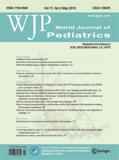
世界儿科杂志(英文)(World Journal of Pediatrics) 万方知网目次维普目次
- CSCD
- 科核
- 高T1
- 主管单位:
教育部
- 主办单位:
浙江大学、浙江大学医学院附属儿童医院、浙江大学出版社有限责任公司
- 国际刊号:
1708-8569;EISSN1867-0687
- 国内刊号:
33-1390/R
- 学科分类:
- 字数:
8000-34000
- 有无基金:
/有基金 100.0%
- 周期:
CN外文-月刊
- 特殊属性:
第一批认定学术期刊
- 电话:
0571-87084307(202205期)
- 邮箱:
wjpch@zju.edu.cn(202205期)
- 复合因子:
0
- 综合因子:
0
- 收录:
万方,知网目次,维普目次
- 级别:
CSCD,科核,高T1
期刊简介
《世界儿科杂志》期刊已被查看: 次
更新频次
单位占比
一作占比
/有基金-100.0%投稿指南
1、投稿方式:在线投稿。
2、刊内网址:http://www.wjpch.com
https://link.springer.com/journal/12519
https://www.editorialmanager.com/wjop(投稿系统)
3、出刊日期:月刊,每月15日出版。
2022年9月6日星期二
《世界儿科杂志(英文)》投稿须知
【2022年05期信息】
Instructions for Authors
World Journal of Pediatrics is a peer-reviewed journal published by Children's Hospital, Zhejiang University School of Medicine, Hangzhou, China. The journal gives priority to reports of outstanding clinical and experimental works as well as important contributions related to common problems of infants, children and adolescents worldwide.
Submission
Manuscripts should be submitted via the submission system at https://www.editorialmanager.com/wjop. The address of the editorial office is as follows: Children's Hospital, Zhejiang University School of Medicine, 3333 Binsheng Rd, Binjiang District, Hangzhou 310052, China. Email: wjpch@zju.edu.cn.
Acceptance
Manuscripts should meet the following criteria: original material,clear writing, appropriate study methods, valid data, and reasonable conclusions supported by the data. In short, they should contain important information or topic of general medical interest.
Peer-review process
All the manuscripts that adhere to its style and Instructions for Authors are referred to peer-review. Some of them are rejected immediately after an in-house review. The rejection at this stage is due to insufficient originality, serious scientific flaws or absence of message. The remaining articles are sent to at least two reviewers expert in the subject. Manuscripts are reviewed with due respect for authors' confidentiality, and the identity of peer reviewers is also kept confidential. A decision is made from 6 to 12 weeks according to the response from reviewers, revision by the author(s) and reappraisal on the revision.
The accepted manuscripts are subjected to editorial revision to comply with the requirements on language and style of the journal. The copyright of the accepted and published articles is held by the journal and all the published materials can not be reproduced or published elsewhere, in whole or part, without the written permission from the editor.
Duplicate submission
Manuscripts are considered with the understanding that they have not been published previously and are not under consideration by another publication. The author should alert the editor if the work includes subjects about which a previous report has been published. A research paper submitted to this journal should not overlap by more than 10% with the previously published work or work submitted elsewhere, which would be considered as duplicate publication. If in doubt, authors may forward copies of the published work or material submitted elsewhere to this journal for decision-making.
Proofs and reprints
Upon acceptance of the article, the corresponding author will receive a link to the special Author Query Application at Springer’s web page where you can sign the Copyright Transfer Statement online and indicate whether you wish to order OpenChoice, offprints, or printing of figures in color. Once the Author Query Application has been completed, your article will be processed and you will receive the proofs. Corrections on the proof should be restricted to errors only and no substantial additions/deletions should be made. No addition or deletion in the names of the authors is permissible at this stage. A copy of the issue carrying the article is supplied free of charge to the authors. Reprints may be ordered on payment in advance.
Categories of Articles
Articles can be considered for publication as editorials, original articles, review articles, special communications, brief reports, letters to editor, commentaries, or clinical image.
Original article
Original articles should report original research relevant to basic and clinical pediatrics including randomized trials, intervention studies, studies of screening and diagnostic tests, cohort studies, cost-effectiveness analyses and case control studies. While reporting randomized controlled trials (RCT), authors must attempt to be in conformity with the consolidated standards of reporting trials (CONSORT) statements.[1] Each manuscript should be accompanied with a structured abstract (divided into background, methods, results and conclusions) in no more than 250 words. Four to five key words to facilitate indexing should be provided in alphabetical order along with the abstract. The text should be divided in sections on introduction, methods, results and discussion. Number of tables and figures should be limited to a maximum of 5 and 3 respectively. The typical text length for such contributions is 2500-3500 words (excluding title page, abstract, tables, figures, acknowledgements and references).
Research letter:Short accounts of original articles win also be considered for publication as research letters.These focused reseach letters must not exceed 1500 words, 3 illustmtions or tables and up to 20 references,preferably recent publications. No abstract should be included.Research lettlesl will be peer reviewed in a manner identical to original articles.
Review article, Systematic review & Meta-analysis
Review articles or systematic, critical assessments of literature are also published. Normally, a review article on a subject already published in the World Journal of Pediatrics is not accepted for a period of 3 years. The typical length for review articles is 4000 words or fewer, excluding tables, figures, and references. Authors submitting review manuscripts should include a structured abstract of around 250 words describing the need and purpose of review, methods used for selection, extraction and synthesis of data, and main conclusions. While reporting systematic reviews and meta-analyses, authors must attempt to be in conformity with the PRISMA statement (http://www.prisma-statement.org/); a completed PRISMA checklist and flow diagram should also be submitted as supplemental files for checking. The templates of the checklist Instructions for Authors and flow diagram can be downloaded from the PRISMA website (http://www.prisma-statement.org/statement.htm).
Correspondence
Letters commenting upon a recent article in the World Journal of Pediatrics are welcome. Such letters should be received within 6 months of the article's publication. At the editorial board's discretion, a letter may be sent to authors/experts for comments and both letter and reply may be published together. Letters may also relate to other topics of interest to pediatricians and others, and/or useful clinical observations. Letters should not be more than 400 words. The number of authors should not exceed 2, including the authors' reply in response to a letter commenting upon an article published in this journal.
Clinical image
A short text of about 150 words depicting the condition with color photographs (vide infra) is needed. Normally only clinical photographs are accepted but accompanying skiagrams or pathological images could also be considered for publication. Photographs should be of high quality, clearly identify the condition and preferably add to the existing knowledge.
Personal viewpoint
Such articles are published on topical pediatric issues including social aspects. It is expected that the authors have sufficient credible experience on the subject for giving viewpoints. These should not exceed 1500 words.
Preparing Manuscripts
Manuscripts should be prepared in accordance with the Uniform Requirements for Manuscripts Submitted to Biomedical Journals.[2] A summary of technical requirements for preparing the manuscript is provided below:
• Double-space throughout the maintext including abstract, text, acknowledgements, references, figure legends. Start each of these sections (in same order) on a new page, numbered consecutively in the upper right hand corner.
• Use at least 11 point font size (Times New Roman or Arial).
• Conventional units are preferred with SI units in parenthesis, if available. The metric system is preferred for the expression of length, area, mass and volume.
• Use nonproprietary names of drugs, devices and other products.
• Tables, figures or crafts should be prepared and submitted in separate files.
Manuscripts not fulfilling the technical requirements shall be returned to the authors without initiating the peer-review process.
Title page
The page should contain (i) the title of the article: which should be concise but informative (simpler the title the better; preferably it should contain all the key words to help electronic retrieval reliably); (ii) a short running title of less than 40 characters; (iii) initials and surname of each author with the highest academic degree(s) and designation at the time when the work was done; (iv) name, address, telephone, fax, email address of the corresponding author; (v) funding source; (vi) ethical appproval; (vii) conflict of interest for all authors. If none, say "No financial or non-financial benefits have been received or will be received from any party related directly or indirectly to the subject of this article."; and (viii) contributors' statement.
Authorship
All persons designated as authors should qualify for the authorship.
Authorship credit should be based on substantial contributions to (i) concept and design, or acquisition of data, or analysis and interpretation of data; (ii) drafting the article or revising it critically for important intellectual content; and (iii) final approval of the version to be published. Conditions 1, 2 and 3 must all be met.
Participation solely in the acquisition of funding or the collection of data does not justify authorship. All such people who contributed to the work but do not satisfy all the conditions should be listed in the acknowledgements. Authors are responsible for obtaining written permissions from everyone acknowledged by name. One of the authors shall act as guarantor of the paper and he/she should take the responsibility for the integrity of the work as a whole, from its inception to published article. Authors should provide a description of what each author contributed on the title page. Subsequently, no names can be added or deleted without written permission of the editor. Written consent of authors whose names are being deleted should be obtained. This journal reserves the right to satisfy itself regarding the specific role of each listed author to justify authorship.
……
更多详情请查看刊内信息或官网信息。
上一篇:建筑学研究前沿(英文)(Frontiers of Architectural Research)下一篇:偏微分方程(英文版)(Journal of Partial Differential Equations)
《世界儿科杂志》同类妇产科|儿科期刊
-
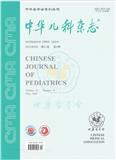
中华儿科杂志
北核,CSCD,科核,武A+,高T1
CN中文-月刊影响因子1.748
-
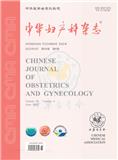
中华妇产科杂志
北核,CSCD,科核,武A+,高T1
CN中文-月刊影响因子2.974
-
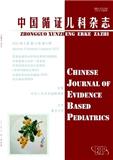
中国循证儿科杂志(原:中国医学文摘-基础医学分册)
北核,CSCD,科核,高T1,武B+
CN中文-双月刊影响因子1.114
-

实用妇产科杂志
北核,科核,CSCD扩,武A,高T3
CN中文-月刊影响因子1.67
-

中华小儿外科杂志
北核,CSCD,科核,高T3
CN中文-月刊影响因子0.869
-
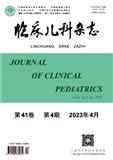
临床儿科杂志
北核,CSCD,科核,高T3,武B+
CN中文-月刊影响因子1.009
-
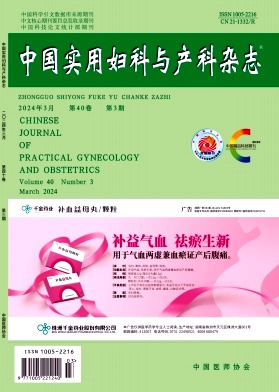
中国实用妇科与产科杂志
北核,CSCD,科核,武A+,高T2
CN中文-月刊影响因子2.71
-
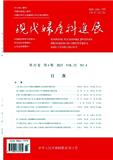
现代妇产科进展
科核,武A-,高T3
CN中文-月刊影响因子1.447
常见问题
-
世界儿科杂志杂志社官网、联系方式是什么?
世界儿科杂志杂志社官网:http://www.wjpch.com
投稿网址:https://www.editorialmanager.com/wjop联系电话:0571-87084307(202205期)
投稿邮箱:wjpch@zju.edu.cn(202205期) -
世界儿科杂志杂志是核心期刊么?
世界儿科杂志是核心期刊,级别是:CSCD,科核,高T1, 是:妇产科|儿科分类下的万方,知网目次,维普目次收录的期刊。
-
请问你们是世界儿科杂志杂志社吗?
我们不是《世界儿科杂志》杂志社。本站主要从事期刊信息展示与期刊推荐,不是任何杂志官网,直投稿件请联系杂志社。本站仅提供免费的学术指导、论文辅导、期刊投稿信息整理收集服务。
-
你们指导服务后可以保证文章被发表吗?
期刊发表的成功与否,主要取决于文章内容的质量。编辑老师会根据研究领域、创新性等多因素进行考量。我们会帮助您理解期刊的发表要求,助力提升发表几率,从而增加发表的机会。
-
晋级论文能否在报纸上发表?
在学术界,论文的发表往往被视为研究者职业发展的重要一环。晋级论文,即为了获得更高职称或学术地位而撰写的学术论文,通常需在专业期刊上发表。然而,许多人可能会问
